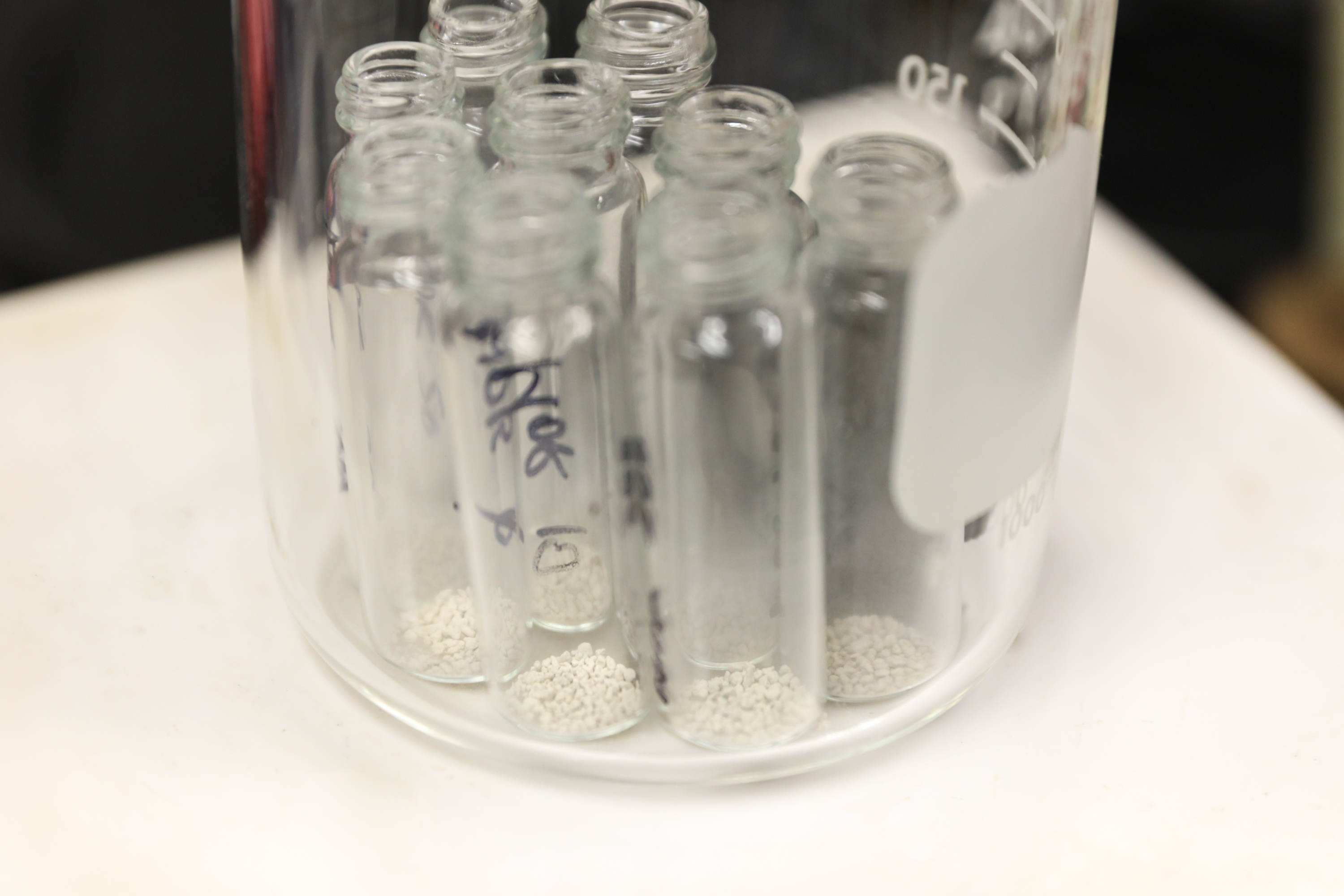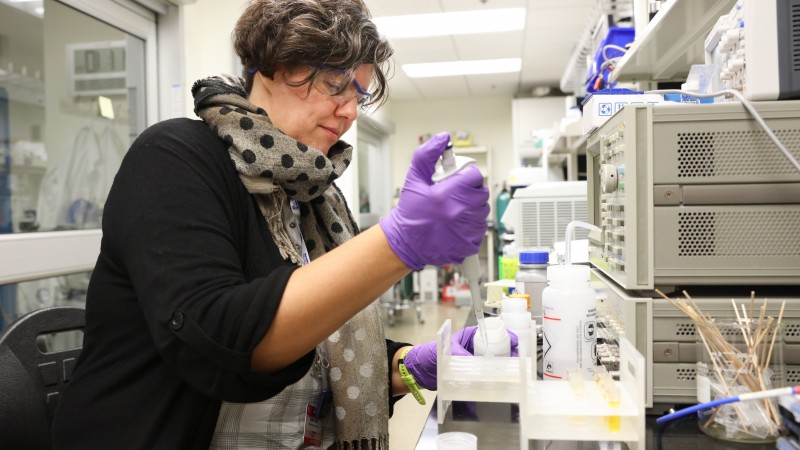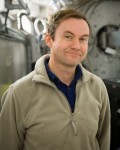Water filtration is essential to maintaining public health. The ability to see how persistent contaminants like harmful bacteria, micropollutants, and microplastics behave at the atomic scale can enable engineers to make improved filters for more effective water treatment methods.
The European Spallation Source (ESS), currently under construction in Lund, Sweden, is set to open to users in 2023. In preparation, ESS scientist Monika Hartl and her collaborators at Swedish Water Research are using neutrons at the Department of Energy’s (DOE’s) Oak Ridge National Laboratory (ORNL) to study how bisphenol A (BPA), a chemical used in plastics, interacts with water filters.
BPA is a key component in a clear, tough, shatterproof plastic called polycarbonate that is widely used in safety products and consumer goods. As polycarbonate decomposes in water, BPA can be released into the environment, where studies have shown that BPA consumption, often a result of water contamination, can negatively impact plant, animal, and even human health. Filtering this contaminant out of water supplies can reduce its negative effects on the environment while also minimizing or eliminating any negative effects on human health.
Industrial sand and clay filters are often used early in the water filtration process before more advanced purification methods like chlorine treatment are applied. The sand used for filtering has microporous structures capable of adsorbing contaminants from the water, and clays have layered structures with similar capabilities.

Sand and clay water filter samples were analyzed using neutron scattering and
the SNS user laboratories to see how they interacted with water containing the
chemical bisphenol A, also known as BPA. (Image credit: ORNL/Genevieve Martin)
Using the VISION instrument, beamline 16B at ORNL’s Spallation Neutron Source (SNS), Hartl and her collaborators from the Swedish water industry can use neutron scattering to see how the BPA impacts the filter materials’ surfaces and thus their effectiveness in adsorbing molecules at the atomic level.
“We are looking at how to remove plastic decomposition products from the water by using sand and clay filters. In particular, we are trying to figure out how BPA interacts with clay structures and sand structures,” said Hartl.
Neutrons are nondestructive and can penetrate materials such as sand and clay deeply, unlike similar research methods. Their sensitivity to hydrogen makes them ideal for studies involving water, especially for studying water in structures that are opaque and hard to penetrate.
“With neutrons, you can penetrate the filter easily and you can see the BPA inside the material,” said Hartl.
“There’s a great team on VISION, and they have a well-equipped user lab where I can prepare a broad range of samples with many options to confirm the quality of my samples before putting them in the beamline. If I need to modify something during the experiment, I can check my materials in the user lab instead of wasting beam time,” said Hartl, who is currently planning similar user laboratories for the ESS.
“Chemistry labs are very important for neutron scattering. The ability to prepare samples and to characterize them at neutron sources has become essential, especially for water research.”
Using the data from this experiment, Hartl can identify how the filter materials adsorb the BPA, as well as which structures and materials perform better than others, in order to develop improved water filters that last longer and perform better.
“If we figure out how water and bisphenol interact with the filters, we can then learn how to modify the filter to better remove the bisphenol, which would be very helpful for water plants,” Hartl said.
This work is being supported as an “industrial pilot project for neutron and photon experiments at large scale research infrastructures” by the Swedish funding agency Vinnova (project number 2018-03264). The partners in this project are Dr. Alfredo Gonzalez-Perez, research group leader and project coordinator from the Swedish Water Research AB; Prof. Kenneth Persson, head of research Sydvatten AB; and Monika Hartl.
SNS is a DOE Office of Science User Facility. UT-Battelle LLC manages ORNL for the DOE Office of Science. The Office of Science is the single largest supporter of basic research in the physical sciences in the United States and is working to address some of the most pressing challenges of our time. For more information, please visit http://science.energy.gov/.—by Josh Witt






